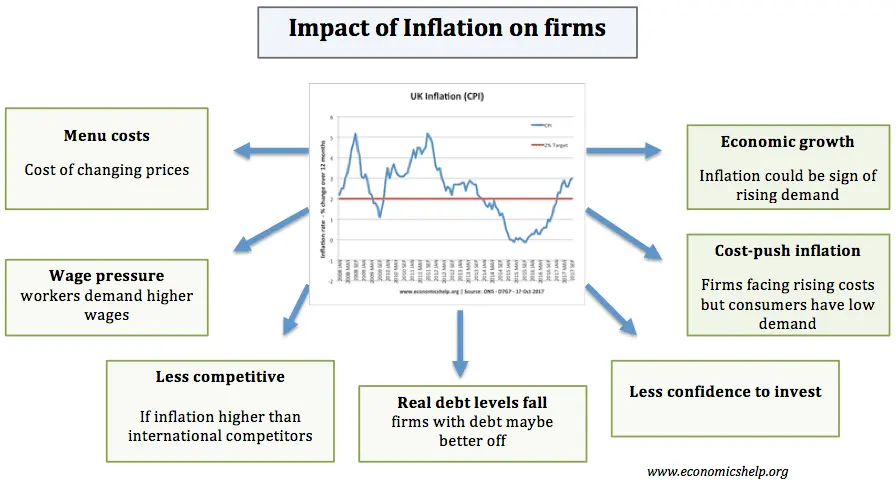3 Strategies to Help Startups & Small Businesses deal with Price & Inflation
Business challenges are an everyday event. The list is significant; price increases in supplies, inflation, operating expenses, inventory expenses, employees, insurance, etc. Many companies choose to deal with their costs in many ways. For example, they make specific strategies for inflation and raising their prices. They know that a price increase can cause their best customers to stop or reduce their purchases; in other words, you lose sales.
Companies deal with inflation by raising their prices, lowering the quality of their products, or simply lowering their profit margins. However, there are other much more effective methods. Here we tell you!

How to survive inflation without affecting consumers?
You can use many tactics to deal with inflation. However, making a good or bad decision influences customer behavior. Therefore, as a small business owner, you should think about finding the best solution.
The Harvard Business Review presents three options.
- The first is to clean the portfolio of products or services.
- The second is to reposition the brand and change the pricing model.
- The third, of course, is a combination of all three.
Inflation should not be seen as a nuisance but rather a new option to stand out during tough times. Customers can see you as an empowered business giving you more credibility and loyalty to your brand. Taking advantage of opportunities is the key to sustaining your business.

Let’s talk about options to mitigate an inflation problem.
Option 1: Restructure or recalibrate the portfolio of products or services
There is no doubt that every company deals with difficulties from time to time. It doesn’t matter the years of experience or its competitive power on the market. However, sometimes unexpected situations occur that disrupt the well-being of a company, for example, inflation. There are several techniques you can use to deal with sudden changes without affecting your customers’ initiative to keep purchasing:
- Grouping products (sell them in bundles)
- Ungroup products (sell them separately)
These two ways are the most effective methods to avoid affecting your profit margins.
For this method to work, you need to establish a price that stays in the margins of what the client is willing to pay, which satisfies them. If the price is below what the customer is willing to pay, he considers it a bargain, thus achieving the sale. It is known as consumer surplus economics.
Another way to restructure the portfolio is to look for alternatives to current products, either based on low prices to compete with the ones you already have or look for items or offer services with higher prices. The customer will see your current product line much more affordable by introducing higher prices making the sale.
An important fact is that customers pay attention to price changes and quantities and qualities. So, keep this in mind when making changes.
In those businesses where the price is the main character, the client will be more sensitive to changes. On the contrary, if the company is based on quantity offers, the client will be less susceptible to prices than quantities. Using ingenuity with this method is entirely at the company’s discretion and the type of client it serves.

Option 2. Brand Repositioning
Businesses take advantage of economic wealth on the market, but what happens when that is no longer an option. It often leads to an overvalue of the brand or its offers. Inflation is the perfect time to correct this imbalance in positioning products or services concerning their value. For example, when a product or service loses its competitive advantage, it makes sense to lower prices. However, it is a risk to maintain a product or service under the same conditions when its value diminishes.
How can companies deal with this problem?
- Reducing marketing expenses
- Lowering the price of items
- Work on a more realistic positioning
If the product’s value is above the market price, the situation changes; the value should be linear to the price of the product or service. But for this to happen, it is necessary to develop an excellent marketing campaign.
Option 3: Change the Price Model
The price model is the method to price products or services based on production costs, customer’s perception of its value, and product type.
The changing price models are nothing new. However, companies are adopting new models to charge for products or services. Undoubtedly, changing the way businesses charge for their product brings excellent advantages. Here are a couple of examples:
Price per consumption
One of the ways you can improve is charging by consumption. For example, you can charge per month or unit, depending on your business type. The price is usually much lower, giving more flexibility to grow your audience and clients.
Avoid losing customers
Make offers that justify the increase in prices. Instead of increasing the prices of products or services, opt for giving options. For example, you can increase prices based on outcome-based or access. It all depends on how you can present the message to your clients. Another strategy is to develop better or more innovative products.
Niche & Luxury
More than often, the big-ticket items suffer the most during inflation. People stop purchasing luxury products until they feel things are getting normal. The good thing about this type of business is that they count on loyal customers. For example, where can you purchase a Channel bag, but through Channel? This type of business has such a small niche that it will be hard to search other places. They partly control their market because they have unique products or services.
Adjusting to new standards is essential to survive crises. Maintaining strategies and options, but developing new models, is each company’s unique value. You, as an entrepreneur, must take into account that troubles can come at any time, and it is better to be prepared with contingency plans. Remember, getting loyal customers is getting more complicated every day.


